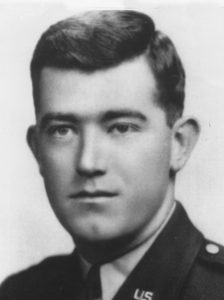Dill, Paul Nesbit
Army 1st lieutenant

Paul Nesbit Dill, age 34, from Delaware, New Castle county.
Service era: Korea
Date of death: Monday, February 13, 1950
Death details: On the evening of November 27, 1950, Chinese Communist Forces (CCF) launched a massive attack against the U.S. and United Nations (UN) troops stationed in the Chosin Reservoir area in north-east North Korea. The resulting seventeen-day conflict became known as the Battle of Chosin Reservoir. At the time of the initial CCF attack, members of the U.S. Army’s 31st and 32nd Infantry Regiments were defending the area north of Sinhung-ni, on the east side of the reservoir. The defenders were overwhelmed by the numerically superior CCF, and on December 1 were forced to withdraw to friendly lines at Hagaru-ri. Many men were lost or captured during the withdraw, with survivors reaching friendly lines in Hagaru-ri on December 2 and 3. Once at Hagaru-ri, the survivors of the withdrawal manned a section of the perimeter near East Hill, a strong defensive position overlooking the town. On the night of December 3, the Chinese attacked the Hagaru-ri perimeter and overwhelmed the defenders there. Many Americans were killed or went missing during these actions. Captain Paul Nesbit Dill, who joined the U.S. Army from Delaware, was a member of M Company, 3rd Battalion, 31st Infantry Regiment, 7th Infantry Division. He was wounded by enemy machine gun fire on November 29, as his unit defended the eastern side of the Chosin Reservoir. As the 31st Infantry Regiment began its fighting withdrawal to Hagaru-ri, CPT Dill, along with other wounded men, was loaded on to a truck. Enemy roadblocks prevented many vehicles from reaching Hagaru-ri, and CPT Dill went missing at some point during the fighting withdrawal. He was never reported as a prisoner of war, and he remains unaccounted for. Today, Captain Dill is memorialized on the Courts of the Missing at the National Memorial Cemetery of the Pacific.
Source: National Archives, Defense POW/MIA Accounting Agency